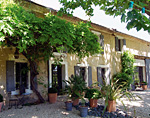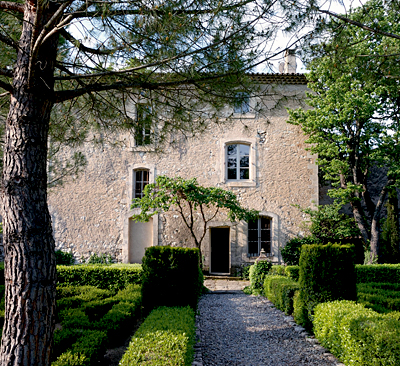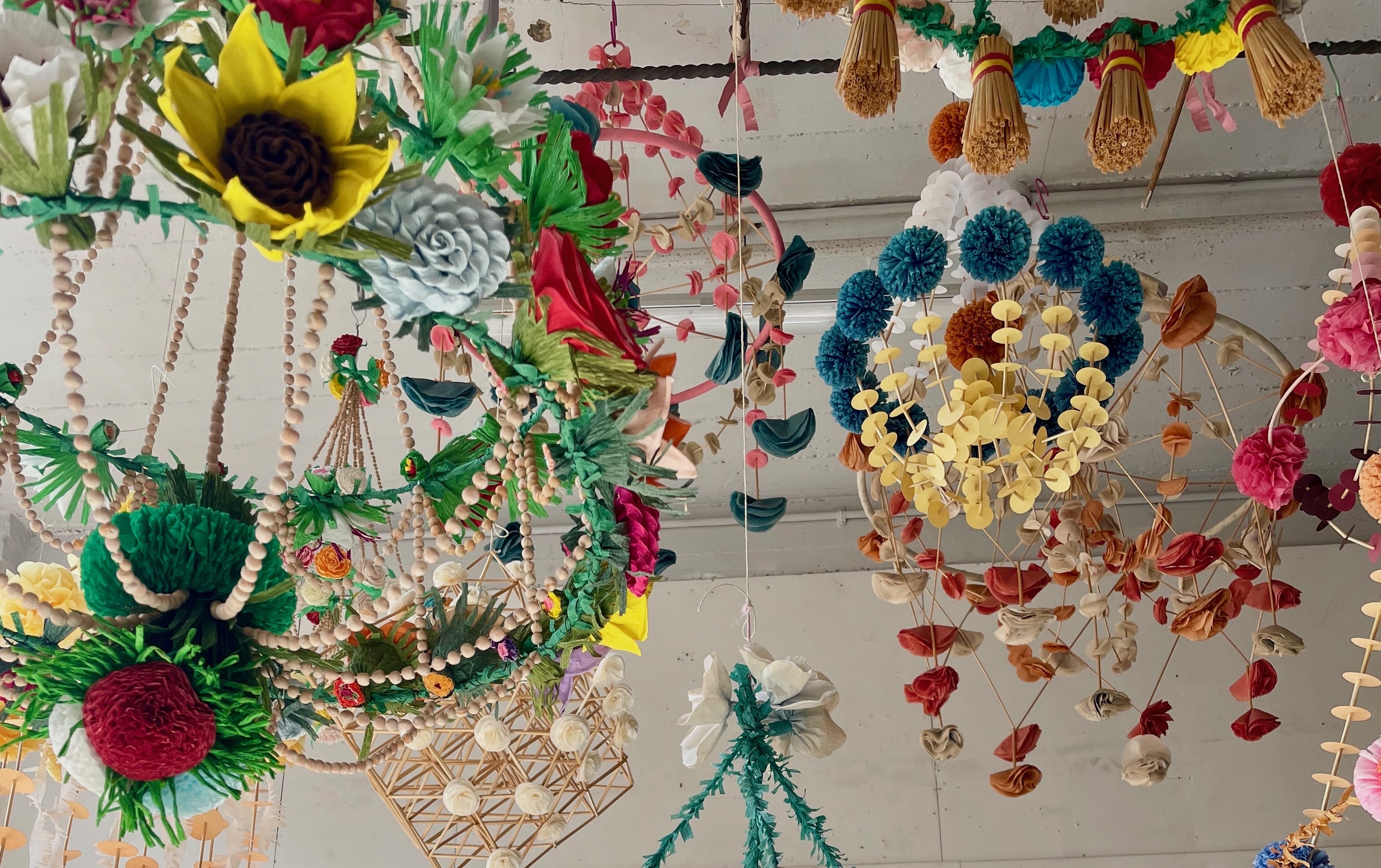Luxury property for sale in Provence
Arabella Youens examines the enduring appeal of the Lubéron in Provence


Provence means different things to people. To fans of Cézanne, it's the sharp angles of the Mont Sainte-Victoire, which rises up behind Aix; to others, it's the purple hues given off by the tunnels of lavender rolling over the hills in summer. But to most of the world, thanks to not only author Peter Mayle, but, more recently, Ridley Scott in his 2006 film A Good Year, Provence is the Lubéron.
The Lubéron region stretches east to west from the fertile Rhône Valley to the first hints of the Alps. To the north stands Mont Ven-toux, one of the most challenging stages on the Tour de France, and through the middle runs a national park formed in 1977, which protects the area even from forces as powerful as Hollywood (scenes from Jean de Florette were filmed here).
Despite what we British might like to think, Mr Mayle didn't discover the area. Its sharp light had been favoured by artists, who went there year after year in the 1960s (lending a Bohemian air to the predominantly agricultural society). Where culture goes, Parisians follow, and the Lubéron soon became the second-home destination of choice-especially after the TGV arrived in 2001. ‘Back in the 1960s, when the artists arrived in the area, you could buy the whole village of Gordes-which is often cited as one of the prettiest in the country-for €6,000.

Buy a baside: POA through Valancogne & Partners (00 33 4 32 52 05 10)
Now, it's among the most expensive places to buy in France,' explains Christine Upton of Valancogne & Partners. Of course, many glamorous names put the area on the map in the intervening years: John Malkovich used to live in Bonnieux, and Pierre Cardin owns the Marquis de Sade's former château in Lacoste and hosts a music festival there every summer. ‘Ridley Scott, who also has a house in the area, filmed A Good Year at Château la Canorgue, a small, family-run winery in Bonnieux,' adds Mrs Upton. ‘And, regardless of what you may think of the movie, two people have bought a house from me off the back of that film.'
Within the golden triangle of the villages of Bonnieux, Ménerbes and Gordes, society is decidedly cosmopolitan. It's not unusual to find hamlets with Canadian, American, British, Dutch and Swiss residents. ‘Like-minded people are drawn to the area: film directors, writers, publishers it's arty-farty, but not glitzy like the Côte d'Azur; nobody here wants gold taps,' says Mrs Upton. It's more about being low-key. ‘Everyone dresses in linen-preferably slightly crushed-in the summer and cashmere in the winter, a look summed up by the contents of Edith Mézard's shop at Château de L'Ange (www.edithmezard.fr).
‘It's not as busy as the Côte d'Azur, but it's still social,' explains American Scott Stover, executive director of the Centre Pompidou Foundation (an American group that supports the Parisian museum). ‘I like being in a place where I can meet the type of people I might mix with in London, Paris or LA.' Mr Stover has owned one of the areas finest bastides, La Chaubade, for the past 22 years, and says its new owner will be able to enjoy extraordinary views. ‘I know there's a lot of competition for this adage, but I truly believe the Lubéron is one of the most beautiful places in the world,' he says. ‘From our garden, the view is like a fantasy of a perfect Provençal landscape. From one side, you look towards the ochre-coloured hills of Rousillon, and beyond, you can make out the town of Gordes. From the other side, you can see the Lubéron mountains.'
Sign up for the Country Life Newsletter
Exquisite houses, the beauty of Nature, and how to get the most from your life, straight to your inbox.
The market
Unlike the Tuscan landscape, to which the Lubéron's honey-coloured hillside villages are often compared, there's no industry on the valley floor and new building is almost unheard of, which means that property retains its value. Prices in the picture-postcard villages of the golden triangle are inevitably high.
Houses to the south of the national park are slightly less expensive, although those around the village of Lourmarin (where Mr Mayle now lives, after returning from a séjour in the States) still command a price. ‘Two or three generations ago, people wanted to buy and restore a mas [farmhouse],' explains Ivan Seymus of Janssens Immobilier. ‘Now, that's changed, and buyers don't always want the hassle of doing large restoration works. However, for those who do, advances in technology have helped-I know of one builder who installs webcams on site so that owners can follow the progress of the work.'
As for the local market, ‘there hasn't been anything dramatic in terms of a huge rise and fall in prices; it's much steadier,' explains English agent Rod Duval. ‘How-ever, we did see a slight cooling-off of prices when the recession hit.' Paul Humphreys, head of Knight Frank's French desk, adds that the tide began to turn at the end of 2009. ‘Four years ago, it just got too expensive for British buyers, but, as of last autumn, they're back. It's now quite well priced, and I think interest will continue this year, which is good news for buyers and sellers.'
Reap the rent
The rental season in the Lubéron is surprisingly long, starting from April and running through to October. Antoine Reguis of Your Provence says: ‘Many of our clients take advantage of this fact: about 30% of the people who buy with us put their house on the rental market in the season to ensure it covers the running costs.' Rental prices start from about €2,400 to €18,000 a week in the high season (July and August), depending on number of bedrooms, the style of the house and the location. ‘Some of our houses are spectacularly well equipped, with plenty of staff on hand to attend to every need,' explains Mrs Upton. At that end of the market, owners can charge €18,000 a week.
Prices come down about 20% in the cushion months of the summer, ‘but they go up to high season over Christmas and New Year,' adds Miss Upton. ‘It's a popular time to visit, despite the fact that it's very cold. We have great Christmas markets, and the church services have Nativity plays with live animals. This Christmas, we drank Champagne on our terrace at lunchtime-it was sunny and at least 16°C-but at night, it fell below zero.'
NEED TO KNOW
Insider's Lubéron
Eat At Maison Gouin in Coustellet. Upstairs is a traiteur and organic butcher and downstairs is a wine cellar. You eat in the restaurant and choose the wine yourself in the cellar-at shop prices (00 33 4 90 76 90 18) Drink Coffee at the Café de la Poste in Goult-everyone's idea of Provence, thanks to Peter Mayle's descriptions (00 33 4 90 72 23 23) Experience A meal at Le Castelas in Sivergue, a farm run by an old Sardinian shepherd who sits you at long trestle tables and uses only produce from the farm (00 33 4 90 74 60 89) Shop At Edith Mézard in Lumières-the best place to stock up on linen (00 33 4 90 72 36 41) Visit Local villages, which go en fête at weekends during the summer months Taste Omelettes with truffles during the fair in Ménerbes every December Try Ballooning over the Lubéron-a great way to see the landscape (www.montgolfiere-provence-ballooning.com) Hear Great music at the Lubéron Jazz Festival, which takes place in Apt, May 10-16 (www.luberonjazz.net)
-
 Burberry, Jess Wheeler and The Courtauld: London Craft Week 2025 explained
Burberry, Jess Wheeler and The Courtauld: London Craft Week 2025 explainedWith more than 400 exhibits and events dotted around the capital, and everything from dollshouse's to tutu making, there is something for everyone at the festival, which runs from May 12-18.
By Lotte Brundle Published
-
 Everything you need to know about private jet travel and 10 rules to fly by
Everything you need to know about private jet travel and 10 rules to fly byDespite the monetary and environmental cost, the UK can now claim to be the private jet capital of Europe.
By Simon Mills Published
